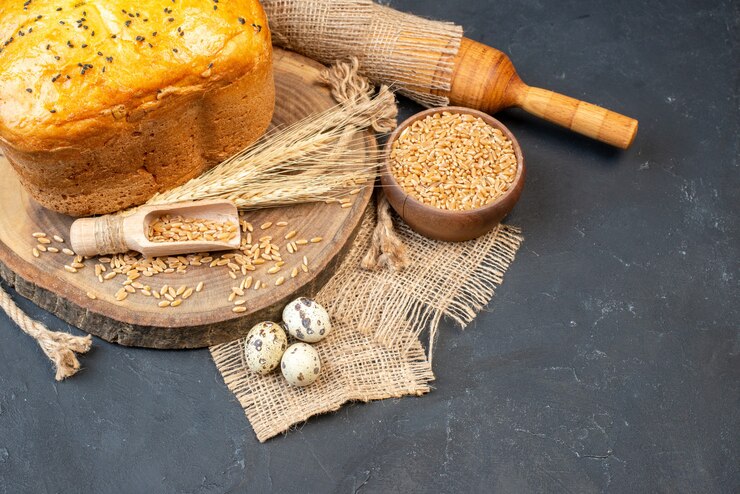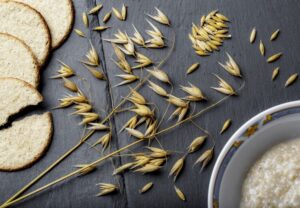
What is all-purpose flour in Australia is a staple ingredient in many kitchens worldwide, and it’s no different in Australia. However, if you’re new to Australian cooking or transitioning from another country, you might notice some differences in terminology and availability. In this article, we’ll break down exactly what all-purpose flour is, how it’s referred to in Australia, and its various uses.
What is All-Purpose Flour?
All-purpose flour, as the name suggests, is a versatile type of flour suitable for a wide range of baking and cooking tasks. It is made from a blend of hard and soft wheat, giving it a balanced protein content—typically around 10–12%. This makes it a great choice for many everyday recipes like cakes, cookies, breads, and pastries.
All-Purpose Flour in Australia: A Different Name
In Australia, all-purpose flour is commonly referred to as plain flour. This term can confuse newcomers or those who are used to other English-speaking countries, like the United States or Canada, where “all-purpose flour” is the standard term. However, plain flour in Australia serves the same general function.
Despite the name difference, plain flour and all-purpose flour are identical in terms of their use and properties. They both lack leavening agents like baking powder, which makes them distinct from self-raising flour, another popular flour variety in Australia that contains added baking powder and sometimes salt.
Types of Flour Available in Australia
In Australian supermarkets and specialty stores, you’ll often find a few key varieties of flour alongside plain flour. Understanding these can help you choose the right one for your recipes:
- Plain Flour (All-Purpose Flour): This is the go-to flour for most everyday cooking needs. It doesn’t contain any raising agents, making it ideal for recipes where you add your own leavening ingredients, such as baking powder or baking soda.
- Self-Raising Flour: Contains baking powder mixed into the flour. It’s often used for recipes like scones, biscuits, and some cakes where an additional rising agent is required.
- Bread Flour: Also known as strong flour, this type of flour has a higher protein content (around 12–14%), making it perfect for yeast-based recipes like bread and pizza dough, where gluten development is crucial.
- Cake Flour: A lower-protein flour that produces a finer crumb and softer texture, ideal for cakes, muffins, and other delicate baked goods. Cake flour isn’t as common in Australia as it is in the U.S., but it can be found in some specialty stores.
- Wholemeal Flour: A whole grain version of flour that includes the bran, germ, and endosperm of the wheat grain. It has a coarser texture and more nutrients compared to refined white flour.
How to Use All-Purpose (Plain) Flour
Whether you’re whipping up a batch of pancakes, baking a loaf of bread, or making a batch of cookies, plain flour can handle a wide range of recipes. Here are some common uses for plain (all-purpose) flour:
- Baking: Cookies, cakes, brownies, and muffins all benefit from the medium protein content of plain flour, which provides a nice balance between tenderness and structure.
- Thickening Sauces: Plain flour is commonly used as a thickening agent in sauces, soups, and gravies. Just be sure to mix it with fat (such as butter) or liquid to avoid lumps.
- Batters: For recipes that require batter, like pancakes, crepes, or fritters, plain flour gives the right consistency without overpowering the other ingredients.
- Pasta Making: Plain flour is sometimes used to make pasta dough, although some recipes might call for specific flours like semolina.
Substituting All-Purpose Flour
If you come across a recipe that calls for all-purpose flour and you’re in Australia, you can almost always use plain flour. However, for specific recipes, you may need to make minor adjustments:
- Substituting Self-Raising Flour: If a recipe calls for self-raising flour and you only have plain flour, you can make your own by adding 2 teaspoons of baking powder for every cup of plain flour.
- Substituting Bread Flour: If you’re making bread and don’t have bread flour, you can still use plain flour, but the texture may be slightly less chewy due to the lower protein content.
Buying All-Purpose (Plain) Flour in Australia
All-purpose flour is widely available in supermarkets across Australia under the label “plain flour.” Common brands include White Wings, Anchor, and supermarket own-brands such as Woolworths and Coles. For those looking for organic or specialty flours, stores like Harris Farm Markets and health food shops offer a broader range.
Read More: http://aoomaal.com
Conclusion
In Australia, plain flour is what you would refer to as all-purpose flour in other parts of the world. It’s a versatile and essential ingredient in cooking and baking, suited for a wide variety of recipes. Whether you’re thickening a sauce, baking a cake, or preparing a savory pie, plain flour is the reliable go-to in Australian kitchens.
Understanding these local differences in terminology ensures that your recipes turn out just right, no matter where you’re cooking!







